You are using an out of date browser. It may not display this or other websites correctly.
You should upgrade or use an alternative browser.
You should upgrade or use an alternative browser.
3D Hobby Shop 47" Extra 300shp
- Thread starter scarface
- Start date
Doc Austin
70cc twin V2
Extra SHP__Flying With An Old Friend
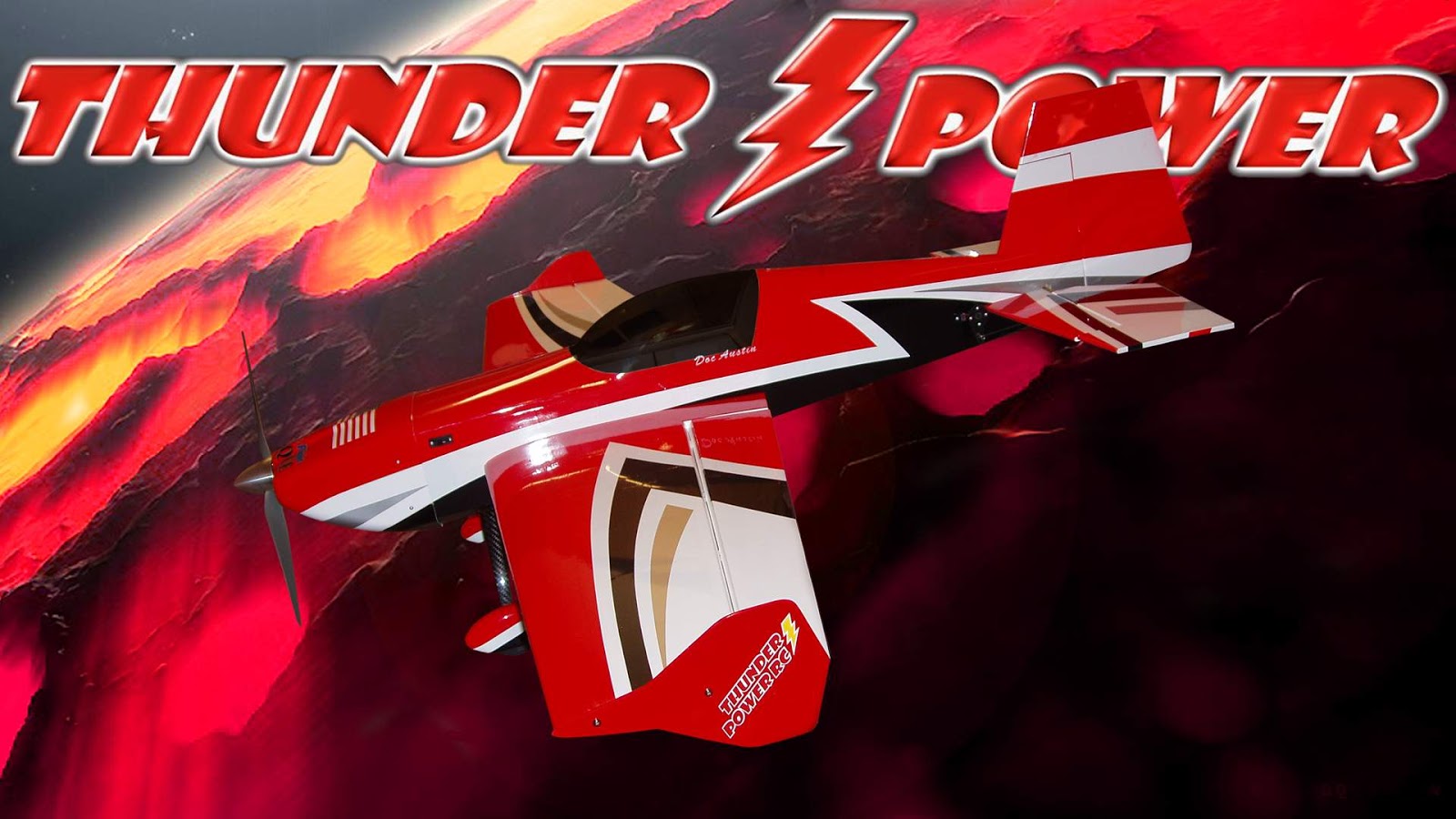
The recent merger of Extreme Flight and 3DHS opens a lot of interesting possibilities. With both brands now under one roof, the first plane I wanted to build was the newest Extra SHP. I learned to fly 3D on an SHP (as did thousands of other guys), and for years it my go-to airframe. Flying the SHP again is like being reunited with an old friend.
The newest SHP has it's roots in the original 3DHS Extra SHP, and also the 3DHS Extra SR. The Extra SR was development of the Extra SHP, and they have now sort of morphed into one plane. The SR was a superior airframe in almost every respect because of it's airfoiled tail section, so it sort or slid over and took the SHP's color scheme, and it's place in the line up. The result is the best Extra SHP that 3DHS can make, and it's a jolly great one.
The SHP is very different from the Extreme Flight Extra EXP. It's a much smaller and lighter plane, so it is ideal for 3S operation while remaining robust enough for 4s too. The fuselage, cowl, canopy, and SFGs are much smaller than the EXP, and it is almost like a different size plane except the wing span is similar at 47" (as opposed to 48").
That's as far as I am going to go in comparing the Extra SHP to it's Extreme Flight EXP counterpart because any more would not be fair to either plane. While they are both Extras, each has it's own design philosophy and flight character. Part of what drew me to Extreme Flight was how good the Extra EXP flew, but I also never forgot how much fun I had with my SHPs.
Because I was so anxious to get this plane in the air, I slammed it together and simply forgot to take build photos! I had the camera sitting there on the bench fully intending to photograph the process, but I was on a mission, and once started, the thought never crossed my mind to document the build. For now this will be a flight report, but I can come back later and do a blog when I build a second SHP.
The Newest SHP
A few things have changed since I last flew an SHP. It has been beefed up a little for 4s operation, and airfoil shaped tail surfaces were added. These airfoiled controls provide smoother and more precise flying, and better control authority. Equally important is that airfoiled surfaces are less prone to destructive high speed flutter. If you are going to fly fast, you had better have an airfoiled tail. The airfoiled stab is also stronger, which is always nice. This is a very significant upgrade.
I would again like to stress how much of an improvement the airfoiled tail surfaces are. I have flown the SHP extensively with the old flat surfaces and the newer airfoiled surfaces, and the new plane is in a different world. Totally. I always wanted a little more pitch authority out of my old flat tailed SHP, but the new SHP is now just about perfect in this respect. The new SHP also grooves better at high speed and is just generally smoother and more solid all the way around. This is simply a massively improved version of the original SHP, which was already a premier airframe.
Let's fly it first and then we can talk about the set up.
All the good things I had to say about the SHP before have not changed, except maybe for the better. The airfoiled stabilizer comes into play in a very big way in both high and low speed flying. 3D is better, precision is better and the plane is more stable all the way around. Again, a massive upgrade for a plane that was already very solid.
With this new found pitch authority, snaps and spins are more violent and cleaner too. The SHP now performs wall and parachute maneuvers with a new "pop" to them. 3D flight is much easier because the controls deliver more authority and you can horse the plane around better. Every aspect of flight is improved, so we have probably seen the last of flat stabilizers on a high performance 3D airframe. Airfoiled stabilizers are now de rigeuer on any serious extreme aerobatic plane.
Flying The SHP on 3s Battery Packs
One of the SHP's hidden strengths is the cost factor. This is a very serious 3D machine that can run on cheap batteries. For example, a Thunder Power 3s 2250 55C Lightning pack runs about $36.99, and you can charge them so quickly that you only need two or three of them. There are other brands of packs as well, though I did my research and chose Thunder Power a long time ago.
For these videos, though, I am flying the plane on either Thunder Power 3s 2250 65C or 4s 2700 65C Pro Pro Power packs. I will fly the 55C packs when I get them and file another report.
Here you can see that on 3S the SHP has an ample amount of power for anything you want to try, though at lower voltage the delivery is less spikey and the plane is extremely easy to handle. Punch out power from a hover is still really, really good. It's enough to get you out of most trouble that newer pilots seem to get themselves into learning 3D, but not so much it makes the plane scary for them. 3S is just about right for everything except flying really extreme.
I like the SHP on 3S because it's nice and light and 3Ds really well. It's much easier to modulate the power because it is not as spikey as a 4s set up, and this makes 3D is smooth and easy. With a 3s set up the SHP is very gentle and mild mannered, though still extremely capable. For the experienced pilot, this means you can manhandle the plane through maneuvers, and the newer pilot does not have to worry the thing is going to jump out from under him.
Pitch authority is very good, and about as much as you would want from a good sport 3D plane. If the SHP had any more pitch authority it might ruin it's easy flying nature. For beginning 3D and flying sport 3D, the pitch authority is just about perfect. I was very particular about hinging mine and I can get about 60 degrees of travel, though newer pilots can turn it back if they are more comfortable with less.
Equally impressive, even on 3s, is the plane's new found high speed manners. With the airfoiled tail the SHP tracks very well at high speed, and now point and slow rolls are much improved. I'm still getting used to the plane but you can see it is locked in enough that I am fearless when flying it fast on the deck.
Still on 3s, I've gotten past the point of being very comfortable and now I'm getting a little bit too crazy with it. This is ok until you get too crazy and push too hard, and I am sure one day I will find that point. Right now, though, this is one of those planes that makes you feel invincible.
The best attributes of the SHP have not changed. It is still extremely stable, forgiving, and it's a very friendly airplane. The SHP just likes to be flown. Everything happens slowly and predictably and there is never a minute's worry the plane is going to bite you.
It is smooth and reassuring to fly, and newer pilots will feel at home right away. Generally the Edges seem to be the most recommended for learning 3D, though I think the SHP is still a great choice for first 3D or first balsa plane. On 3s, it's a lightweight plane with impeccable manners, while on 4s it is smooth, fast and challenging.
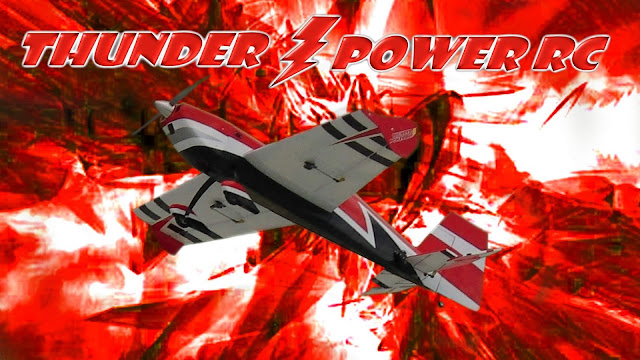
Flying The SHP on 4s Battery Packs
Now we are going to get a little crazy and run the SHP on 4s. You can see that power delivery is a little spikey, though still quite manageable. While the plane is a little more difficult to fly with all this power, the SHP's built in stability keeps it reasonable. I think this is about as much power as you would want to put into the plane because any more might have an adverse effect on it's easy flying nature.
With all that additional 4s power on tap, now the SHP becomes a much more serious airplane. As you would expect, it becomes much more solid and locked in at high speed. Having the added grunt is nothing but giggles when you blast out of a hover or other alpha flight.
When you step up to 4s the SHP remains stable and docile, but as you might expect with more speed, things happen faster. Acceleration become blinding, and you now have to pay more attention when you have the power nailed. The real estate goes by pretty quickly on 14.8 volts.
More power also comes in handy for pulling the plane through snaps and tumbles. With 4 cells you have the speed and power to launch the plane into some pretty violent stuff, and then pull it through the other side. The faster the plane goes, the more locked in it is. Locked in means the plane will track better and hold a straighter heading into slow and point rolls, and other big precision maneuvers.
It goes fast and it goes slow with either battery choice. The only decision you have to make is if you want an extremely gentle and forgiving 3D plane, or a fast and violent, but forgiving 3D plane. If you are a newer pilot, 3s works well because the plane is so easy to control with less power, but if you can handle badass, 4s is the way to go
In general, I am delighted to have another one in my stable. I have always loved Extras, and it started with the original SHP. I loved my previous SHPs, but I already like this one even more, probably because I have five more years of experience and know how to get more out of it. I love it for slow, easy 3D and I love it for high speed precision and violent tumbles. While it flies very different, it is a lot like the 48" Extra EXP in it's ability to do absolutely everything very well.
Even after five years away from flying SHPs, I was very comfortable with this new one the very first moment I took off. In it's previous incarnation as the SR, I had a lot of experience flying this plane, so nothing surprised me at all. It's flies pretty much the way I remember, except it now does everything better than ever. Again, the air foiled tail sections was a deadly serious upgrade for the SHP.
Part of the beauty of the SHP is how adaptable and versatile it is. You can learn 3D with it on 3s, and then go extreme on 4s. Everyone from the newest 3D newbie to the most experienced 3D hero in the club will love the SHP.
Maybe I am just weird for Extras. To me, the Extra, be it SHP or EXP, is like going flying with an old friend.
Power System
The extra robustness of the newest SHP makes it the perfect candidate for my favorite power system, the (140 gram) Torque 2814/820 motor and Airboss 45 Elite ESC. I've been using this combination in my 48" planes for about seven years now with incredible power and 100% reliability. The 2814 bolts straight to the SHP firewall with no modifications.
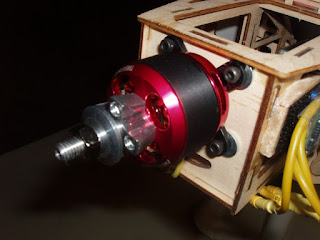
As with all of my 47-48" planes, I am using the Airboss 45 Elite ESC. It can run 3, 4 or 5 cell batteries without the need for a separate BEC (battery eliminator circuit). You don't even have to reprogram it because the Airboss adjusts automatically. You just plug the thing in and go, which is always nice since simple things always seem to work the best There's nothing flashy about the Airboss. It doesn't sing and it doesn't dance. It just works exceptionally well with a minimum of fuss.
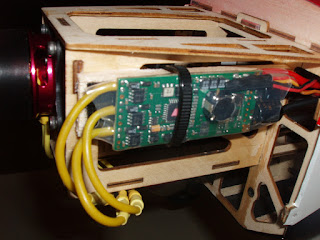
Since late 2010 the Airboss 45 has featured a 6 volt BEC. The extra voltage makes the servos faster, as well as giving more torque and holding power to minimize or eliminate servo stalling and blowback.
A lot of guys are running the Omega 130 motor, which is also fine. The Omega and Torque are similar in weight and power, though as you might expect from the more expensive motor, the Torque runs smoother. The Omega will also bolt right in, so either motor is fine for the job. They are so similar in size that you can switch back and forth and the cowling will still line up. Both are now backed by the Extreme Flight Family Of Brands, so you can't go wrong with either.
Those of you who have Omega 103s or Torque 2818s can still use them, but you may have to use a pull/pull system and move the rudder servo forward to get the correct CG. I've the SHP with all these motors, and I much prefer the 130 gram motors. Part of this is because it has more power, part is because you can run a full 14" prop (on 3s), and finally I personally prefer the ease of setting up a pushrod over a pull system.
Servos
The SHP comes set up for Hitec HS65MG size servos, and I used those on my previous SHPs. When I was originally flying SHPs the BEC on the Airboss ESCs was sending about 5 volts to the servos. Since then the Airboss has been upgraded to a full 6 volts, and this makes the SHP an even more snappy performer than before. In all the videos in this report, the plane uses Hitec HS65MG servos.
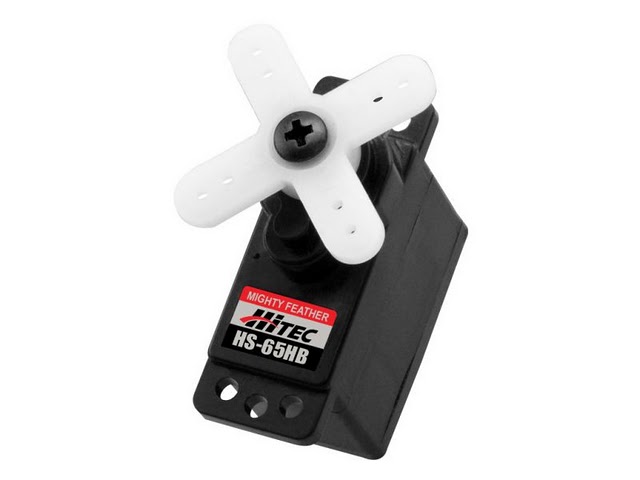
Doc's Note: We will have pictures of the servo and pushrod set ups in the next report
Later, I plan to upgrade the plane to Hitec's new 7.4 volt HS5070MH servos. These drop right in to the existing slots because it is essentially the same sized servo except for being a bit taller. Going to the HV servos eliminates any chance of stalling or blowback, and also gives crisper response, especially in high speed snaps and tumbles that require full control surface deflection. Another advantage of high voltage servos is superior speed, torque and centering. You just generally get a better flying plane.
Still, the HS65MG is fine for this plane, especially if you are running them on 6 volts. They have been flying all over the world with the HS65MG for about eight years now, so if you have some 65MGs laying around, jam them in the plane and go fly it.
Batteries
I like a 3s 2250 battery pack for pure 3D and some sport, whereas a 4s 2600 pack turns the plane into a raging beast. Newer pilots will want to go with 3S and experienced 3D pilots will probably like the plane both ways.
In all of the videos you see in this report, my SHP is using Thunder Power 3s 2250 mah or 4s 2700 mah Pro Power 65C batteries. Both give good run time and impressive power, with the ability to recharge fast. My 3s packs can be charged in about 8-10 minutes, and that's at only a 20 amp charge rate (out of a possible 27). Because I can charge them so quickly, I only have two 3s packs. By the time you land and get the battery out of the plane, the last battery is done charging!
Right now I am waiting on some of the new Thunder Power 3s 2250 55C Lightning series batteries. These have been deeply discounted as compared to the new Magna packs,and are much more affordable to sport 3D pilots on a budget. These packs list out at $36.99, which puts them right in the ball park with most budget batteries. The difference here is that you are getting Thunder Power's two year product warranty, and 1/2 price crash replacement policy. If something ever goes wrong with you Thunder Power pack, they will take care of you. The others? maybe, maybe not.
I don't think dropping 15C (from 70C) makes much difference, but we will see in the next report. Right now everything coming from China is on a slow boat, so it could be July or August before we get to try these packs. Until then, my 70C packs are still rocking.
Prop Choices
I like the plane on 3s because that keeps it light, and I run either an APC 13/6.5 or 14/7 prop. With the 14/7 the SHP does cracking 3D with a lot of control authority. The bigger prop blows a bigger cone of air over the plane and control surfaces, improving lift and control authority. You lose some top speed, but 3D is about flying slow anyway. Going to a 13/6.5 APC gives you back some of the top speed, and it accelerates a little better, but you lose an inch of vectored thrust and 3D suffers a little. It is pretty close on these two propellers and in general the 14/7 is better for pure 3D, while the 13/6.5 is better for all around performance. That, and less power is easier to handle, especially for the newer pilots, and 3s is perfect for them.
For 4s operation I like an APC 12/6 prop. This still gives you enough diameter for good 3D (though not as good as a 13" or 14") and cool operation, and the extra voltage gives you blistering speed and blinding acceleration. Outside of having faster acceleration and more top speed, the SHP does not get any more difficult to fly as you step up to more power. The plane stays stable and you get used to having all that speed and grunt on tap.
In the end your battery and prop choice depends on how you want to fly the plane and what you want to get out of it. For a capable plane to learn 3D on, 3s works really well and the plane remains slow, stable and docile. With 3s, you can also run that big prop that is so essential for post stall performance. You give up a little of top speed, but 3D is about going slow, and newer pilots will be more comfortable with a plane that doesn't try to jump out from under them when they hammer the throttle.
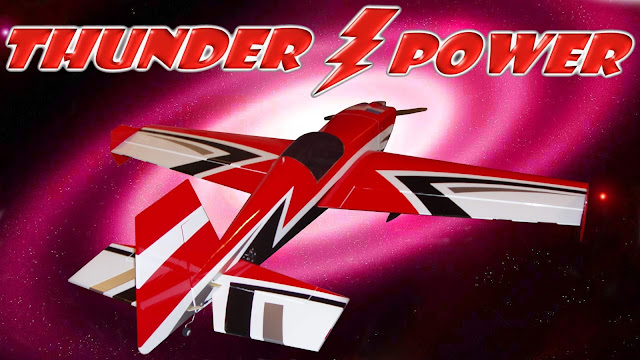
Doc's note: You may noticed the planes in the artwork have a flat stabilizer. This is because I had the artwork from before and there was no time to make up new ones. We will probably be flying and videoing the SHP a lot, so watch for snappy new artwork down the road.
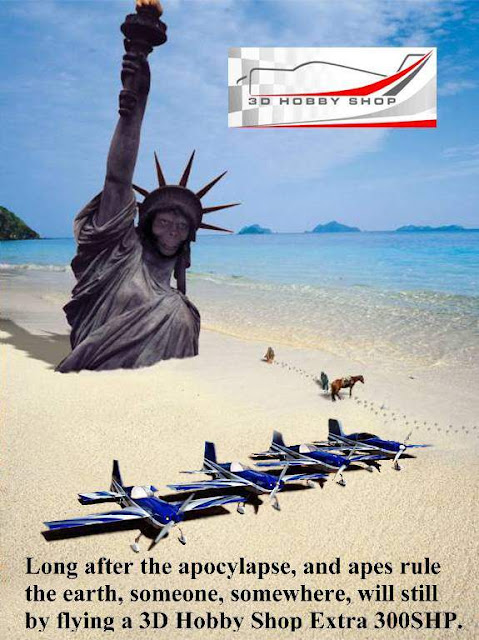

The recent merger of Extreme Flight and 3DHS opens a lot of interesting possibilities. With both brands now under one roof, the first plane I wanted to build was the newest Extra SHP. I learned to fly 3D on an SHP (as did thousands of other guys), and for years it my go-to airframe. Flying the SHP again is like being reunited with an old friend.
The newest SHP has it's roots in the original 3DHS Extra SHP, and also the 3DHS Extra SR. The Extra SR was development of the Extra SHP, and they have now sort of morphed into one plane. The SR was a superior airframe in almost every respect because of it's airfoiled tail section, so it sort or slid over and took the SHP's color scheme, and it's place in the line up. The result is the best Extra SHP that 3DHS can make, and it's a jolly great one.
The SHP is very different from the Extreme Flight Extra EXP. It's a much smaller and lighter plane, so it is ideal for 3S operation while remaining robust enough for 4s too. The fuselage, cowl, canopy, and SFGs are much smaller than the EXP, and it is almost like a different size plane except the wing span is similar at 47" (as opposed to 48").
That's as far as I am going to go in comparing the Extra SHP to it's Extreme Flight EXP counterpart because any more would not be fair to either plane. While they are both Extras, each has it's own design philosophy and flight character. Part of what drew me to Extreme Flight was how good the Extra EXP flew, but I also never forgot how much fun I had with my SHPs.
Because I was so anxious to get this plane in the air, I slammed it together and simply forgot to take build photos! I had the camera sitting there on the bench fully intending to photograph the process, but I was on a mission, and once started, the thought never crossed my mind to document the build. For now this will be a flight report, but I can come back later and do a blog when I build a second SHP.
The Newest SHP
A few things have changed since I last flew an SHP. It has been beefed up a little for 4s operation, and airfoil shaped tail surfaces were added. These airfoiled controls provide smoother and more precise flying, and better control authority. Equally important is that airfoiled surfaces are less prone to destructive high speed flutter. If you are going to fly fast, you had better have an airfoiled tail. The airfoiled stab is also stronger, which is always nice. This is a very significant upgrade.
I would again like to stress how much of an improvement the airfoiled tail surfaces are. I have flown the SHP extensively with the old flat surfaces and the newer airfoiled surfaces, and the new plane is in a different world. Totally. I always wanted a little more pitch authority out of my old flat tailed SHP, but the new SHP is now just about perfect in this respect. The new SHP also grooves better at high speed and is just generally smoother and more solid all the way around. This is simply a massively improved version of the original SHP, which was already a premier airframe.
Let's fly it first and then we can talk about the set up.
FLYING


All the good things I had to say about the SHP before have not changed, except maybe for the better. The airfoiled stabilizer comes into play in a very big way in both high and low speed flying. 3D is better, precision is better and the plane is more stable all the way around. Again, a massive upgrade for a plane that was already very solid.
With this new found pitch authority, snaps and spins are more violent and cleaner too. The SHP now performs wall and parachute maneuvers with a new "pop" to them. 3D flight is much easier because the controls deliver more authority and you can horse the plane around better. Every aspect of flight is improved, so we have probably seen the last of flat stabilizers on a high performance 3D airframe. Airfoiled stabilizers are now de rigeuer on any serious extreme aerobatic plane.
Flying The SHP on 3s Battery Packs
One of the SHP's hidden strengths is the cost factor. This is a very serious 3D machine that can run on cheap batteries. For example, a Thunder Power 3s 2250 55C Lightning pack runs about $36.99, and you can charge them so quickly that you only need two or three of them. There are other brands of packs as well, though I did my research and chose Thunder Power a long time ago.
For these videos, though, I am flying the plane on either Thunder Power 3s 2250 65C or 4s 2700 65C Pro Pro Power packs. I will fly the 55C packs when I get them and file another report.
Here you can see that on 3S the SHP has an ample amount of power for anything you want to try, though at lower voltage the delivery is less spikey and the plane is extremely easy to handle. Punch out power from a hover is still really, really good. It's enough to get you out of most trouble that newer pilots seem to get themselves into learning 3D, but not so much it makes the plane scary for them. 3S is just about right for everything except flying really extreme.
[video=vimeo;127735695]https://vimeo.com/127735695[/video]
I like the SHP on 3S because it's nice and light and 3Ds really well. It's much easier to modulate the power because it is not as spikey as a 4s set up, and this makes 3D is smooth and easy. With a 3s set up the SHP is very gentle and mild mannered, though still extremely capable. For the experienced pilot, this means you can manhandle the plane through maneuvers, and the newer pilot does not have to worry the thing is going to jump out from under him.
Pitch authority is very good, and about as much as you would want from a good sport 3D plane. If the SHP had any more pitch authority it might ruin it's easy flying nature. For beginning 3D and flying sport 3D, the pitch authority is just about perfect. I was very particular about hinging mine and I can get about 60 degrees of travel, though newer pilots can turn it back if they are more comfortable with less.
Equally impressive, even on 3s, is the plane's new found high speed manners. With the airfoiled tail the SHP tracks very well at high speed, and now point and slow rolls are much improved. I'm still getting used to the plane but you can see it is locked in enough that I am fearless when flying it fast on the deck.
[video=vimeo;127736018]https://vimeo.com/127736018[/video]
Still on 3s, I've gotten past the point of being very comfortable and now I'm getting a little bit too crazy with it. This is ok until you get too crazy and push too hard, and I am sure one day I will find that point. Right now, though, this is one of those planes that makes you feel invincible.
The best attributes of the SHP have not changed. It is still extremely stable, forgiving, and it's a very friendly airplane. The SHP just likes to be flown. Everything happens slowly and predictably and there is never a minute's worry the plane is going to bite you.
It is smooth and reassuring to fly, and newer pilots will feel at home right away. Generally the Edges seem to be the most recommended for learning 3D, though I think the SHP is still a great choice for first 3D or first balsa plane. On 3s, it's a lightweight plane with impeccable manners, while on 4s it is smooth, fast and challenging.

Flying The SHP on 4s Battery Packs
Now we are going to get a little crazy and run the SHP on 4s. You can see that power delivery is a little spikey, though still quite manageable. While the plane is a little more difficult to fly with all this power, the SHP's built in stability keeps it reasonable. I think this is about as much power as you would want to put into the plane because any more might have an adverse effect on it's easy flying nature.
With all that additional 4s power on tap, now the SHP becomes a much more serious airplane. As you would expect, it becomes much more solid and locked in at high speed. Having the added grunt is nothing but giggles when you blast out of a hover or other alpha flight.
When you step up to 4s the SHP remains stable and docile, but as you might expect with more speed, things happen faster. Acceleration become blinding, and you now have to pay more attention when you have the power nailed. The real estate goes by pretty quickly on 14.8 volts.
[video=vimeo;127792067]https://vimeo.com/127792067[/video]
More power also comes in handy for pulling the plane through snaps and tumbles. With 4 cells you have the speed and power to launch the plane into some pretty violent stuff, and then pull it through the other side. The faster the plane goes, the more locked in it is. Locked in means the plane will track better and hold a straighter heading into slow and point rolls, and other big precision maneuvers.
It goes fast and it goes slow with either battery choice. The only decision you have to make is if you want an extremely gentle and forgiving 3D plane, or a fast and violent, but forgiving 3D plane. If you are a newer pilot, 3s works well because the plane is so easy to control with less power, but if you can handle badass, 4s is the way to go
In general, I am delighted to have another one in my stable. I have always loved Extras, and it started with the original SHP. I loved my previous SHPs, but I already like this one even more, probably because I have five more years of experience and know how to get more out of it. I love it for slow, easy 3D and I love it for high speed precision and violent tumbles. While it flies very different, it is a lot like the 48" Extra EXP in it's ability to do absolutely everything very well.
Even after five years away from flying SHPs, I was very comfortable with this new one the very first moment I took off. In it's previous incarnation as the SR, I had a lot of experience flying this plane, so nothing surprised me at all. It's flies pretty much the way I remember, except it now does everything better than ever. Again, the air foiled tail sections was a deadly serious upgrade for the SHP.
Part of the beauty of the SHP is how adaptable and versatile it is. You can learn 3D with it on 3s, and then go extreme on 4s. Everyone from the newest 3D newbie to the most experienced 3D hero in the club will love the SHP.
Maybe I am just weird for Extras. To me, the Extra, be it SHP or EXP, is like going flying with an old friend.
Power System
The extra robustness of the newest SHP makes it the perfect candidate for my favorite power system, the (140 gram) Torque 2814/820 motor and Airboss 45 Elite ESC. I've been using this combination in my 48" planes for about seven years now with incredible power and 100% reliability. The 2814 bolts straight to the SHP firewall with no modifications.
As with all of my 47-48" planes, I am using the Airboss 45 Elite ESC. It can run 3, 4 or 5 cell batteries without the need for a separate BEC (battery eliminator circuit). You don't even have to reprogram it because the Airboss adjusts automatically. You just plug the thing in and go, which is always nice since simple things always seem to work the best There's nothing flashy about the Airboss. It doesn't sing and it doesn't dance. It just works exceptionally well with a minimum of fuss.
Since late 2010 the Airboss 45 has featured a 6 volt BEC. The extra voltage makes the servos faster, as well as giving more torque and holding power to minimize or eliminate servo stalling and blowback.
A lot of guys are running the Omega 130 motor, which is also fine. The Omega and Torque are similar in weight and power, though as you might expect from the more expensive motor, the Torque runs smoother. The Omega will also bolt right in, so either motor is fine for the job. They are so similar in size that you can switch back and forth and the cowling will still line up. Both are now backed by the Extreme Flight Family Of Brands, so you can't go wrong with either.
Those of you who have Omega 103s or Torque 2818s can still use them, but you may have to use a pull/pull system and move the rudder servo forward to get the correct CG. I've the SHP with all these motors, and I much prefer the 130 gram motors. Part of this is because it has more power, part is because you can run a full 14" prop (on 3s), and finally I personally prefer the ease of setting up a pushrod over a pull system.
Servos
The SHP comes set up for Hitec HS65MG size servos, and I used those on my previous SHPs. When I was originally flying SHPs the BEC on the Airboss ESCs was sending about 5 volts to the servos. Since then the Airboss has been upgraded to a full 6 volts, and this makes the SHP an even more snappy performer than before. In all the videos in this report, the plane uses Hitec HS65MG servos.

Doc's Note: We will have pictures of the servo and pushrod set ups in the next report
Later, I plan to upgrade the plane to Hitec's new 7.4 volt HS5070MH servos. These drop right in to the existing slots because it is essentially the same sized servo except for being a bit taller. Going to the HV servos eliminates any chance of stalling or blowback, and also gives crisper response, especially in high speed snaps and tumbles that require full control surface deflection. Another advantage of high voltage servos is superior speed, torque and centering. You just generally get a better flying plane.
Still, the HS65MG is fine for this plane, especially if you are running them on 6 volts. They have been flying all over the world with the HS65MG for about eight years now, so if you have some 65MGs laying around, jam them in the plane and go fly it.
Batteries
I like a 3s 2250 battery pack for pure 3D and some sport, whereas a 4s 2600 pack turns the plane into a raging beast. Newer pilots will want to go with 3S and experienced 3D pilots will probably like the plane both ways.
In all of the videos you see in this report, my SHP is using Thunder Power 3s 2250 mah or 4s 2700 mah Pro Power 65C batteries. Both give good run time and impressive power, with the ability to recharge fast. My 3s packs can be charged in about 8-10 minutes, and that's at only a 20 amp charge rate (out of a possible 27). Because I can charge them so quickly, I only have two 3s packs. By the time you land and get the battery out of the plane, the last battery is done charging!
Right now I am waiting on some of the new Thunder Power 3s 2250 55C Lightning series batteries. These have been deeply discounted as compared to the new Magna packs,and are much more affordable to sport 3D pilots on a budget. These packs list out at $36.99, which puts them right in the ball park with most budget batteries. The difference here is that you are getting Thunder Power's two year product warranty, and 1/2 price crash replacement policy. If something ever goes wrong with you Thunder Power pack, they will take care of you. The others? maybe, maybe not.
I don't think dropping 15C (from 70C) makes much difference, but we will see in the next report. Right now everything coming from China is on a slow boat, so it could be July or August before we get to try these packs. Until then, my 70C packs are still rocking.
Prop Choices
I like the plane on 3s because that keeps it light, and I run either an APC 13/6.5 or 14/7 prop. With the 14/7 the SHP does cracking 3D with a lot of control authority. The bigger prop blows a bigger cone of air over the plane and control surfaces, improving lift and control authority. You lose some top speed, but 3D is about flying slow anyway. Going to a 13/6.5 APC gives you back some of the top speed, and it accelerates a little better, but you lose an inch of vectored thrust and 3D suffers a little. It is pretty close on these two propellers and in general the 14/7 is better for pure 3D, while the 13/6.5 is better for all around performance. That, and less power is easier to handle, especially for the newer pilots, and 3s is perfect for them.
For 4s operation I like an APC 12/6 prop. This still gives you enough diameter for good 3D (though not as good as a 13" or 14") and cool operation, and the extra voltage gives you blistering speed and blinding acceleration. Outside of having faster acceleration and more top speed, the SHP does not get any more difficult to fly as you step up to more power. The plane stays stable and you get used to having all that speed and grunt on tap.
In the end your battery and prop choice depends on how you want to fly the plane and what you want to get out of it. For a capable plane to learn 3D on, 3s works really well and the plane remains slow, stable and docile. With 3s, you can also run that big prop that is so essential for post stall performance. You give up a little of top speed, but 3D is about going slow, and newer pilots will be more comfortable with a plane that doesn't try to jump out from under them when they hammer the throttle.

Doc's note: You may noticed the planes in the artwork have a flat stabilizer. This is because I had the artwork from before and there was no time to make up new ones. We will probably be flying and videoing the SHP a lot, so watch for snappy new artwork down the road.

Last edited by a moderator:
Bushwacker
3DRCF Moderator
That is one handsome plane. So how does she fly?
Doc Austin
70cc twin V2
That is one handsome plane. So how does she fly?
What didn't I cover?
Bushwacker
3DRCF Moderator
You got it all Doc, sorry man I was on a crap pc with crap connection doing a RD into my home pc so I didn't get all the good stuff. Home now and can see all. Good stuff man. Thats a wicked little machine isn't it. Very nice indeed, great flying as well to, Thank you.
